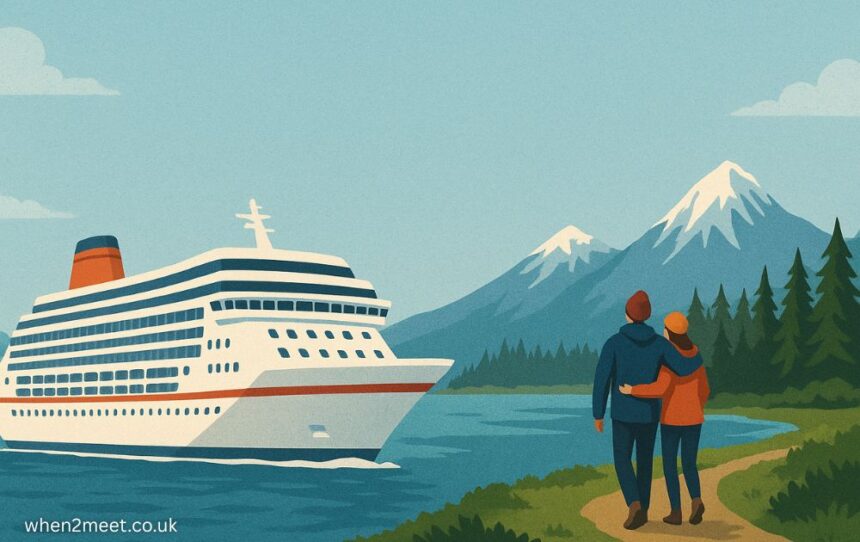Planning an Alaskan cruise brings up one big question that stops travelers in their tracks. Should you go for those massive cruise ships with everything from waterslides to Broadway shows, or pick a smaller vessel that gets you closer to Alaska’s raw beauty? It’s not just about choosing a ship. This decision shapes your entire Alaskan experience.
The giant floating resorts offer comfort and entertainment that’s hard to beat. Meanwhile, smaller ships promise something different—a front-row seat to glaciers, wildlife, and hidden coves that big ships simply can’t reach. Both options have their magic, but they deliver completely different adventures. Let’s break down what you’re really trading when making this choice.
The Big Ship Experience: Floating Cities with Everything
Large cruise ships are like moving resort towns packed with amenities most people only dream about. Picture multiple swimming pools, rock climbing walls, fancy restaurants serving cuisine from around the world, casinos, spas, and evening entertainment that rivals Las Vegas. Some ships even have ice skating rinks and zip lines.
Families love these vessels because there’s something for everyone. Kids stay busy at supervised clubs while adults unwind at the adults-only pool area. Variety means nobody gets bored during sea days. When you explore popular Alaska large ship amenities, you’ll find options like specialty coffee shops, wine bars, fitness centers with ocean views, and shops selling everything from jewelry to souvenirs.
What You Miss on Bigger Vessels
Here’s the catch with those floating cities. Their massive size keeps them from reaching Alaska’s most spectacular hidden spots. They stick to major ports like Juneau, Ketchikan, and Skagway—places that see dozens of ships weekly during cruise season. The experience becomes more crowded and less personal.
When 3,000 passengers flood into a small Alaskan town, the charm gets buried under tourist shops and excursion buses. Big ships also can’t navigate narrow fjords or get close to glaciers the way smaller vessels can. The viewing experience happens from a distance, often from crowded deck rails where everyone’s jockeying for the best photo angle.
Small Ship Magic: Getting Up Close and Personal
Smaller expedition-style ships flip the script entirely. These vessels carry maybe 100 to 300 passengers, creating an intimate atmosphere where you’ll know your fellow travelers by name before the week ends. The real magic happens in what these nimble ships can do. They slip into narrow passages, park right next to glacier faces, and anchor in secluded bays where wildlife roams freely.
Imagine watching a brown bear catch salmon from just 50 yards away, or hearing the thunderous crack of glacier ice calving into the sea while standing on the deck. Small ships often carry kayaks and zodiacs for closer exploration. Naturalists on board provide expert commentary, turning every sighting into a learning moment. The dining experience becomes communal, with shared tables encouraging conversation and connection.
Making the Choice That Fits Your Travel Style
The decision really comes down to what kind of vacation refills your soul. Love having options and activities? Need that safety net of familiar comforts? Big ships deliver that security blanket with consistent quality and endless entertainment. They’re perfect for multigenerational trips where different ages want different things.
The structured schedule and port-intensive itinerary suits travelers who like knowing exactly what’s coming next. On the flip side, adventure seekers and nature lovers find their bliss on smaller vessels. These ships attract passengers who’d rather watch whales than catch a magic show.
Conclusion
The great Alaska cruise debate doesn’t have a universal answer. Big ships provide comfort, variety, and entertainment that makes cruising accessible and enjoyable for everyone. Small ships offer intimacy, flexibility, and wilderness access that creates once-in-a-lifetime moments.
Some travelers prioritize the journey itself—the ship becomes their floating hotel while Alaska scenery serves as pleasant backdrop. Others want Alaska to be the star, with the ship simply serving as their ticket to remote wilderness. Both approaches create memorable vacations, just different kinds of memories.



